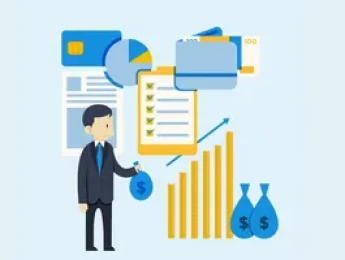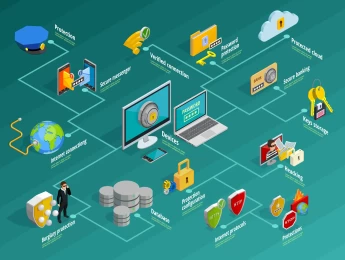Controlling your assets and stock through inventory management enables you to optimise your profits. However, inventory can be one of the most complex assets to track. Incorporating inventory accounting into your management process can help you adapt to supply chain changes and improve customer satisfaction.
This course targets accounting professionals and provides an overview of inventory accounting, which tracks inventory quantities. Understanding how to value inventory on a balance sheet accurately is essential to effectively monitoring inventory.
Upon completion of this course, participants will be able to:
- Understand the importance of maintaining accurate inventory records.
- Identify ways to improve the accuracy of inventory records and assign costs to inventory.
- Apply strategies and methods to create and maintain a system of inventory accounting and controls.
- Develop a deeper understanding of inventory-specific accounting factors such as spoilage, rework, scrap, transfer pricing, cost layering, and budgeting.
- Describe inventory policies and the maintenance of those policies.
This course is intended for:
- Accounting Professionals.
- Inventory Managers and Supervisors.
- Supply Chain Professionals.
- Anyone looking to learn more about inventory accounting.
This course employs a variety of adult learning styles to ensure comprehensive understanding and retention. Participants will review case studies to highlight key areas of importance and identify potential pitfalls. They will be provided with top-tier tools for engaging in learning exercises to enhance their skills. By analysing these examples, participants will thoroughly understand how these skills, techniques, and methods can be effectively applied in the workplace.
Day 5 of each course is reserved for a Q&A session, which may occur off-site. For 10-day courses, this also applies to day 10
Section 1: Overview of Accounting for Inventory
- Describe inventory and inventory transactions.
- Outline accounting for inventory management.
- Differentiate between Push and Pull inventory management systems.
- Compare Periodic and Perpetual inventory management systems.
Section 2: Maintaining Accurate Inventory Records
- Describe methods and controls for inventory data collection.
- Interpret inventory review reports.
- Examine common maintenance and data errors in inventory records.
- Identify environmental and personnel factors that impact record accuracy.
- Discuss backflush costing in Just-In-Time inventory systems.
- Review key elements of inventory auditing and corrective action systems.
Section 3: Inventory Counting and Reconciliation
- Describe the structure and set-up of an inventory record system.
- Describe the physical inventory count.
- Identify issues and remediation strategies for physical inventory count.
- Review cycle counting in perpetual inventory management.
- Analyse the benefits of using a control group.
- Examine the process of inventory reconciliation.
Section 4: Estimation Methods to Calculate Ending Inventory
- Describe the Gross Profit method.
- Describe the Retail Inventory method.
- Explore key concepts of ending inventory.
- Discuss the impacts of overstated ending inventory.
Section 5: The Standard Costing Method
- Describe the standard costing method in perpetual inventory management.
- Discuss historical, attainable, and theoretical standards for costing.
- Identify variances in costing and issues with variance analysis.
- Determine which variances should be reported.
Section 6: The Process Costing Method
- Describe process costing.
- Describe the weighted average method.
- Describe the First In, First Out (FIFO) method.
- Examine the Hybrid Costing system.
- Review the format for process costing journal entries.
- Identify challenges with process costing.
Section 7: Inventory Spoilage, Rework, and Scrap
- Define spoilage, rework, and scrap.
- Describe accounting for normal and abnormal spoilage.
- Outline the cost allocation for spoilage.
- Explain reporting and accounting for rework.
- Summarise accounting for scrap.
Section 8: Inventory Transactions
- Identify types of inventory transactions.
- Describe inventory adjustments: lower of cost, market, obsolete, physical count, scrap, and spoilage.
- Examine overhead allocation transactions.
- Explore receiving transactions and sales transactions.
Section 9: Pricing for Inventory Transfers
- Describe inventory transfer pricing methods: market-based transfer price, adjusted cost basis, negotiated transfer price, and cost plus basis.
- Identify cost anomalies and pricing issues caused by transfer pricing.
- Examine the tax implications of inventory transfer pricing.
Section 10: Inventory Policies & Budgeting
- Describe types of inventory policies.
- Examine the Lower Cost or Market Rule and its impact on policy updates.
- Describe how obsolete inventory updates are handled.
- Discuss Bill and Hold and Collection Take-Back policies.
- Outline a production budget.
- Explore how to budget inventory for multiple products.
- Identify issues with production budgets.
Upon successful completion of this training course, delegates will be awarded a Holistique Training Certificate of Completion. For those who attend and complete the online training course, a Holistique Training e-Certificate will be provided.
Holistique Training Certificates are accredited by the British Assessment Council (BAC) and The CPD Certification Service (CPD), and are certified under ISO 9001, ISO 21001, and ISO 29993 standards.
CPD credits for this course are granted by our Certificates and will be reflected on the Holistique Training Certificate of Completion. In accordance with the standards of The CPD Certification Service, one CPD credit is awarded per hour of course attendance. A maximum of 50 CPD credits can be claimed for any single course we currently offer.
- Course Code PO1-113
- Course Format Classroom, Online,
- Duration 5 days














